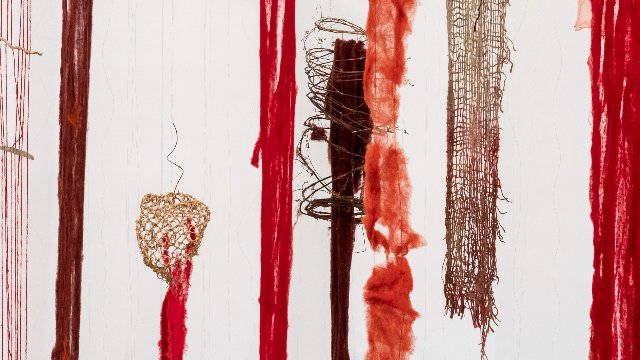Guggenheim Museum Acquisitons
Emphasis on Diversity
By: Guggenheim - Mar 08, 2023
In 2022 the Guggenheim acquired over 60 works by more than 40 artists, of whom 75% are new to its collection. The works span from the 1960s to the present day and augment the museum’s holdings of some of the world’s most influential artists. Furthermore, the demographic composition of the group amplifies the institution’s commitments to equitably diversify its acquisitions and to collect from both an innovative and historic point of view.
Naomi Beckwith, Deputy Director and Jennifer and David Stockman Chief Curator, states: “These acquisitions reflect our dedication, and responsibility, to represent transnational narratives and celebrate the diverse breadth of historic and contemporary art practices. Our goal is to continue the transformative work which shapes the future of the Guggenheim’s collection, exhibitions, and programming.”
From a painted diptych by Lee Lozano (1966), a landmark installation by Kazuko Miyamoto (1973), to a textured piece (1974-75) by Howardena Pindell, the museum has strengthened its historic holdings by established women artists. Highlights include works by artists who have recently presented solo shows at the Guggenheim: Etel Adnan’s in the Syrian Desert (ca. 1960), Gillian Wearing’s I’d Like to Teach the World to Sing (1995), and Cecilia Vicuña’s Quipu del Exterminio / Extermination Quipu (2022), a site-specific installation that debuted in the exhibition Cecilia Vicuña: Spin Spin Triangulene on May 2022.
In keeping with the institution’s commitments, approximately 80% of the works in the past year’s acquisition list were created by members of communities previously underrepresented in the museum’s collection. Works by young and established artists such as Lauren Halsey, Cara Romero, and Wendy Red Star entered the collection for the first time. Anthony Akinbola and Farah Al Qasimi will notably enrich the Guggenheim’s group of international artists.
Diverse in mediums, the acquisitions range from sculpture and painting to video, works on paper, and, in particular depth, photography. Several new additions from the 1960s and 70s deepen the museum’s holdings from the late twentieth century, such as three works by minimalist artist Fred Sandback, two by pioneering land artist Robert Smithson, and Spoke (Jammer) (1976), an important wall-based sculpture from Robert Rauschenberg’s oeuvre.
These acquisitions were funded in large part by the museum’s several acquisition committees, including the International Director’s Council, Asian Art Circle, Latin American Circle, Photography Council, Middle Eastern Circle, and Young Collectors Council, to ensure selections embraced a range of geographies, disciplines, timelines and cultural backgrounds.

